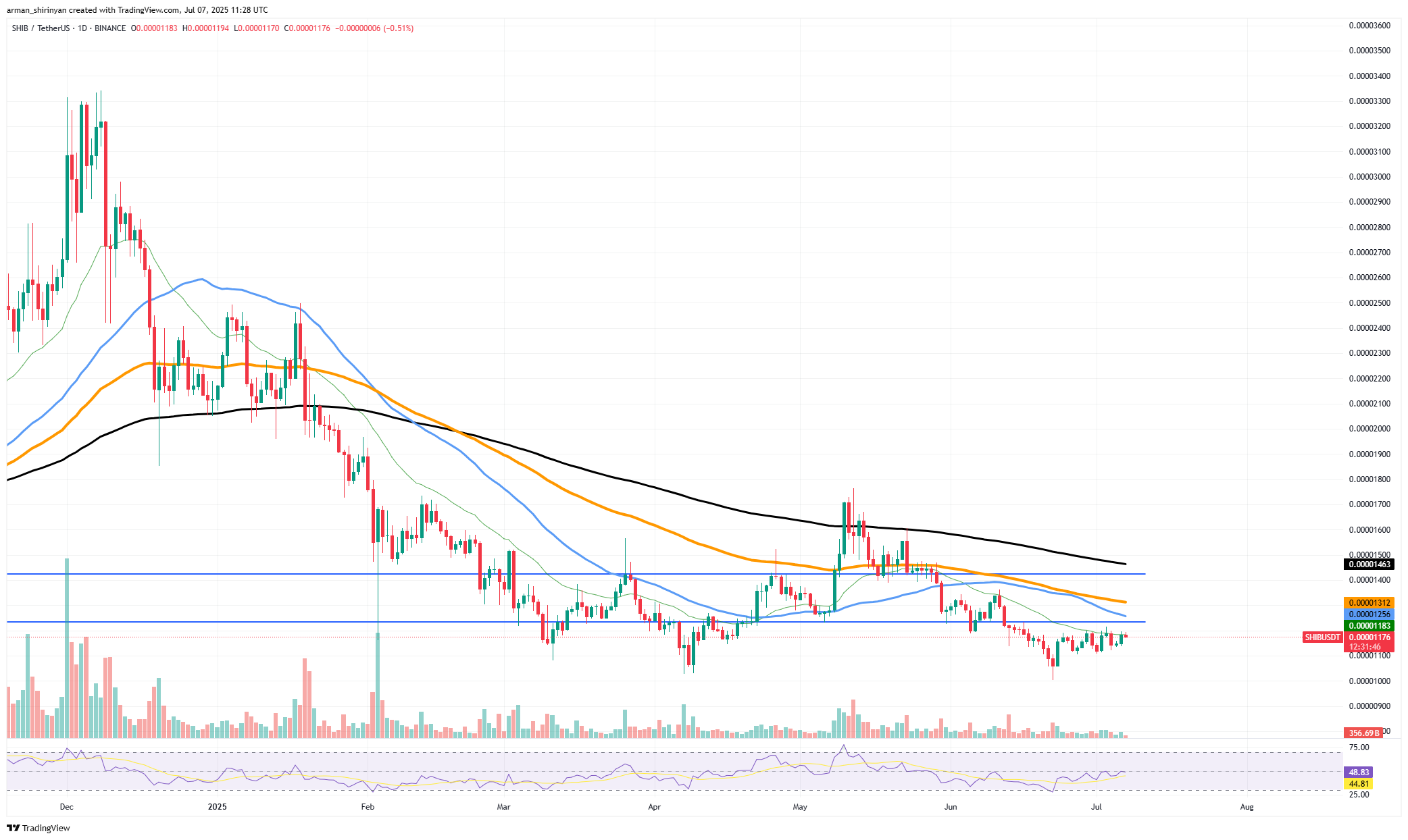Due to a startling 358% collapse in its large holders netflow metric over the last 30 days, Shiba Inu has found itself in an unusual position. The explanation is easier than it might seem even though a decline of this magnitude seems mathematically impossible at first — how can anything lose more than 100%? The difference between inflows (tokens going into whale wallets) and outflows (tokens going out of whale wallets) is measured by large holders' netflow.
The metric would have shown a net swing of -3.5 trillion if it had been positive, say +1 trillion SHIB flowing in, and then reversed to -2.5 trillion SHIB flowing out. This relative shift from a strong negative to a high positive can result in a drop of more than 100%.
SHIB actually transitioned from accumulation mode to a noticeable distribution phase, when whales started to unload their cargo. This huge divergence is concerning because it suggests that major players are either protecting their positions or selling, which frequently erodes the trust of smaller investors. The market is clearly uncertain when netflows flip so sharply in a single month.

According to the price chart, SHIB has been trapped in a protracted downward trend since February 2025. Every rally has run out of steam before retesting important resistances close to $0.000013, and several attempts to break through the descending 100-day and 200-day EMAs have failed.
Over the past few weeks as trading volumes have decreased, the price has consolidated below the 26 EMA, which is currently at $0.000012. This hesitancy serves to strengthen bearish sentiment. At 45, the RSI indicator is still neutral, indicating that there is not an oversold situation that would prompt relief buying.
SHIB runs the danger of moving closer to the $0.000010 support band if it is unable to secure the region above the 26 EMA immediately. All things considered, the collapse in large holder netflows and a consistently poor technical setup raise little hope for SHIB's performance in the near future. Traders should prepare for increased volatility and possible declines unless the asset can reverse sentiment and recover important moving averages.
 u.today
u.today